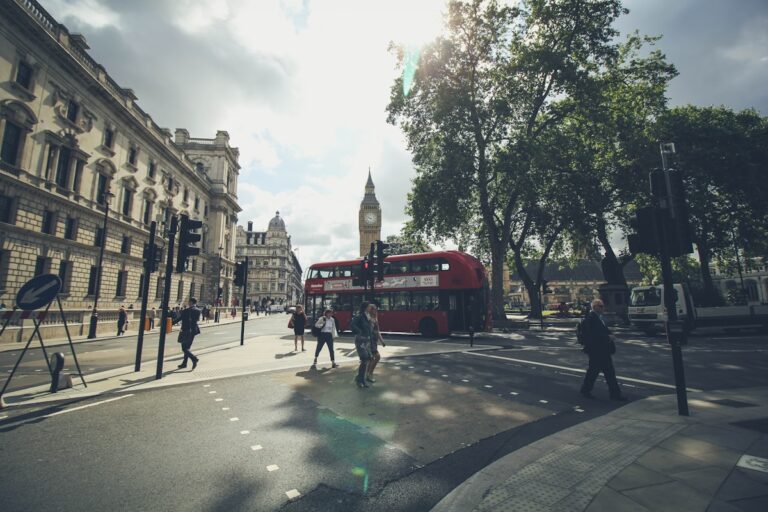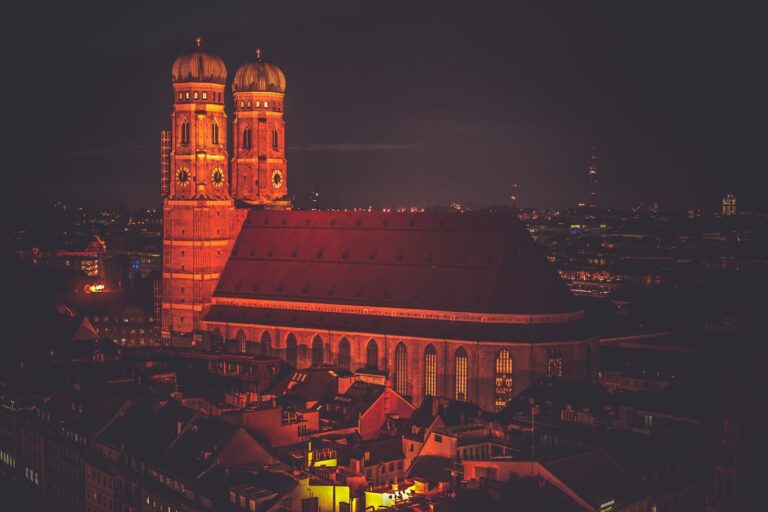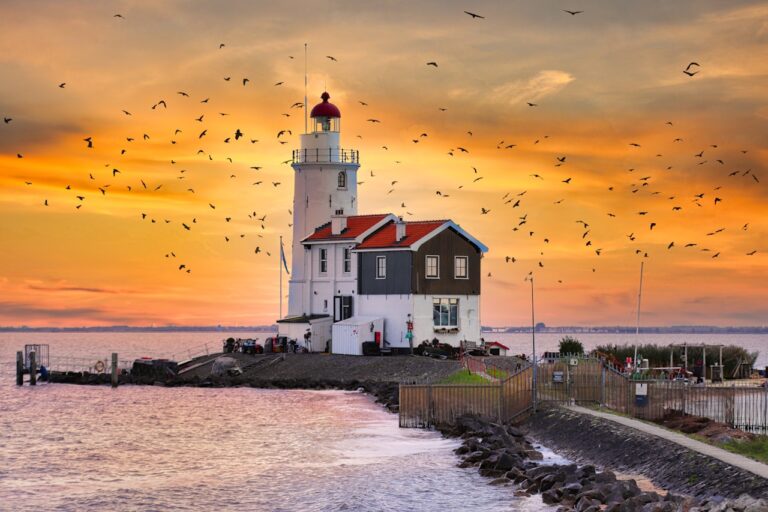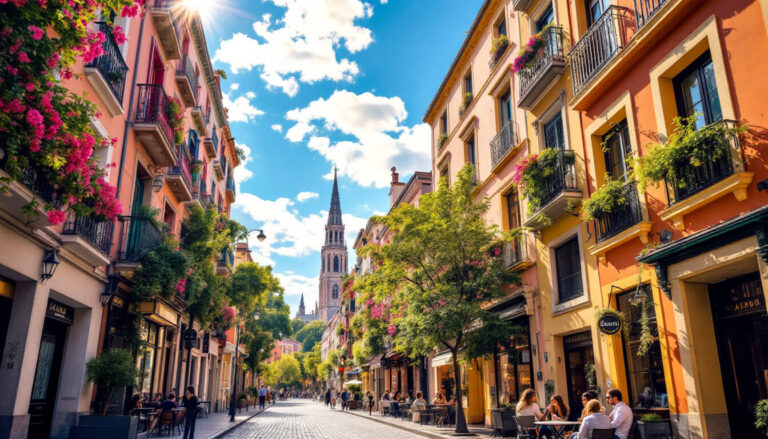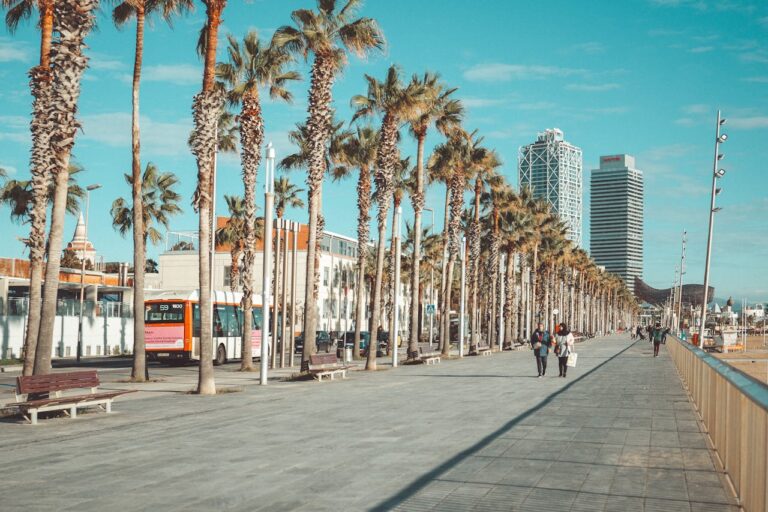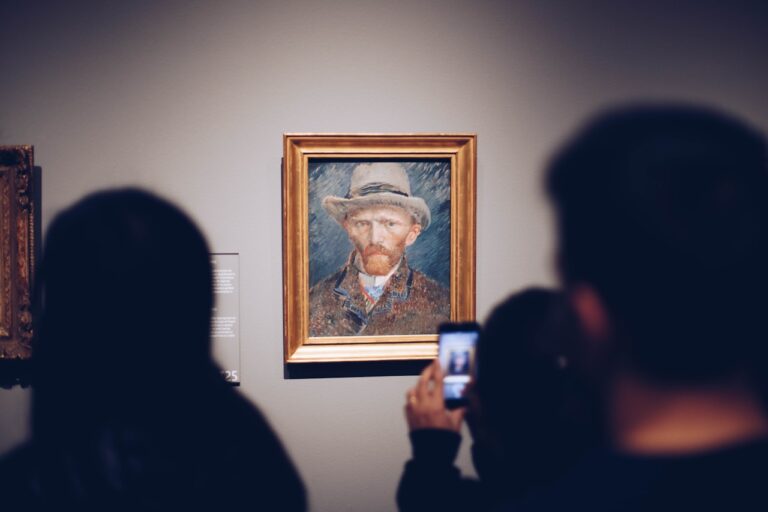Things To Know Before Traveling To Munich
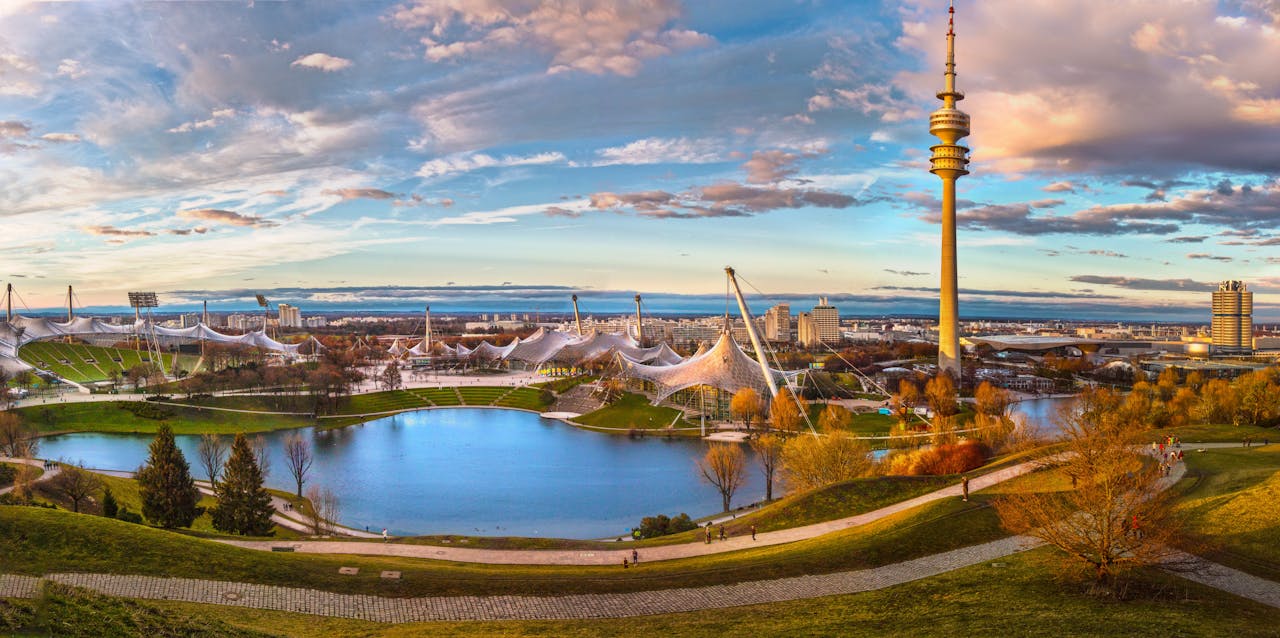
Travelers to Munich should prepare for the city’s blend of Bavarian tradition and modern sophistication.
The capital of Bavaria offers excellent public transportation, widespread English usage, and higher costs than other German cities.
Visitors need 3-4 days to explore highlights like Marienplatz and the English Garden, while basic German phrases enhance local interactions.
Beyond Oktoberfest, Munich rewards those who venture into neighborhoods like Schwabing and Au-Haidhausen for authentic experiences beyond tourist zones.
Principal Conclusions
ShowUnderstanding the Basics of Munich
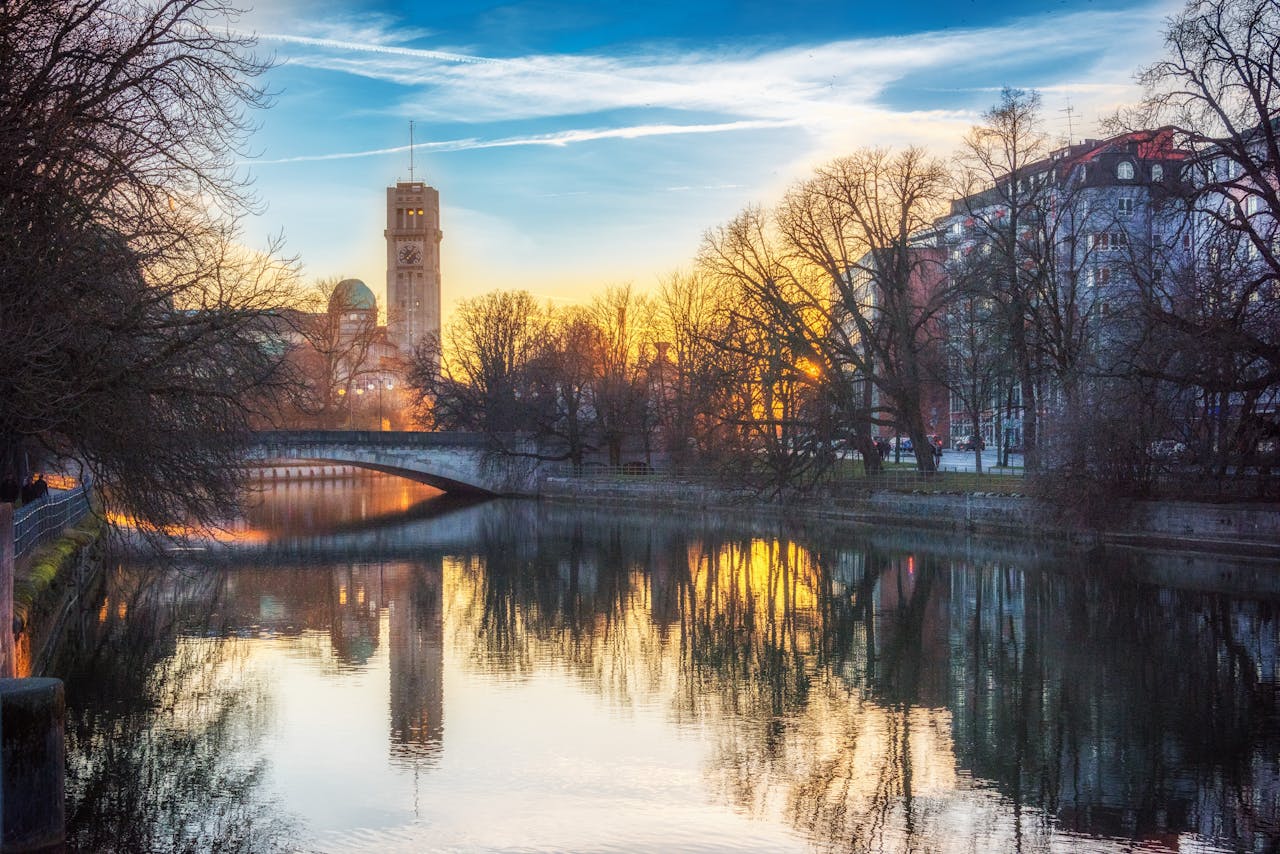
Munich is the capital city of Bavaria, situated in the southeastern part of Germany along the River Isar.
This cultural and economic powerhouse serves as Germany’s third-largest city, boasting a rich history dating back to the 12th century when it was founded by Benedictine monks.
For travelers, Munich’s location within Germany provides an ideal gateway to explore both the country’s southern regions and neighboring European destinations like Austria, Switzerland, and the Czech Republic.
What Is Munich and Where Is It Located?
Munich, known as “München” in German, stands as Bavaria’s capital and Germany’s third-largest city, positioned in the southeastern region of the country along the Isar River.
The city combines traditional Bavarian charm with cosmopolitan sophistication, offering visitors a glimpse into authentic German culture through its architecture, cuisine, and festivals like Oktoberfest.
Throughout its 900-year history, Munich has evolved from a medieval settlement to a cultural powerhouse, serving as a center for arts, technology, and Bavarian political life.
Brief Overview of Munich in German and English Context
Nestled in the heart of Bavaria in southern Germany, Munich stands as the capital city of the Bavarian state and serves as one of Germany’s most significant cultural and economic centers.
Known as “München” in German, this lively metropolis attracts tourists with its rich heritage, Oktoberfest celebrations, stunning architecture, and numerous cultural attractions, making Munich tourism a thriving industry.
Importance of Munich in German History and Culture
Founded in 1158 as “München,” the Bavarian capital has evolved from a modest monastic settlement to become Germany’s third-largest city and a cornerstone of national identity.
Any munich guide will highlight how the city shaped German cultural heritage through its historic places to visit, including royal palaces, museums, and beer halls.
Munich things to see reveal Bavaria’s distinctive contribution to Germany’s complex national story.
Is Munich in Germany and Why It Matters for Travelers
Munich’s status as the capital of Bavaria, Germany’s largest state, gives the city a distinct regional identity that blends Bavarian traditions with cosmopolitan German influences.
Travelers should recognize that Munich differs considerably from other German cities like Berlin or Hamburg through its unique architecture, traditional beer halls, and proximity to the Alps.
Understanding these regional distinctions enhances the travel experience by allowing visitors to appreciate Munich’s special position within Germany’s cultural landscape.
Regional Identity Within Bavaria
While Munich is Germany’s third-largest city and the capital of Bavaria, it possesses a distinct regional identity that sets it apart from the rest of the country.
Many munich guides emphasize that Bavarian culture transcends typical German stereotypes.
Is munich safe? Absolutely, allowing visitors to explore beyond touristy things to do in munich germany and discover authentic Bavarian traditions that locals fiercely preserve.
Key Differences Between Munich and Other German Cities
This distinct Bavarian character extends beyond regional identity into fundamental differences that separate Munich from other major German cities.
While Berlin embraces grittiness and Hamburg maritime influence, Munich offers refined elegance with its pristine streets and traditional beer gardens.
Is Munich worth visiting? Absolutely.
With more concentrated things to do in Munich Germany than other cities, travelers find three days sufficient, despite Munich being expensive compared to its counterparts.
Read more: Best Day Trips From Munich
Planning Your Trip to Munich
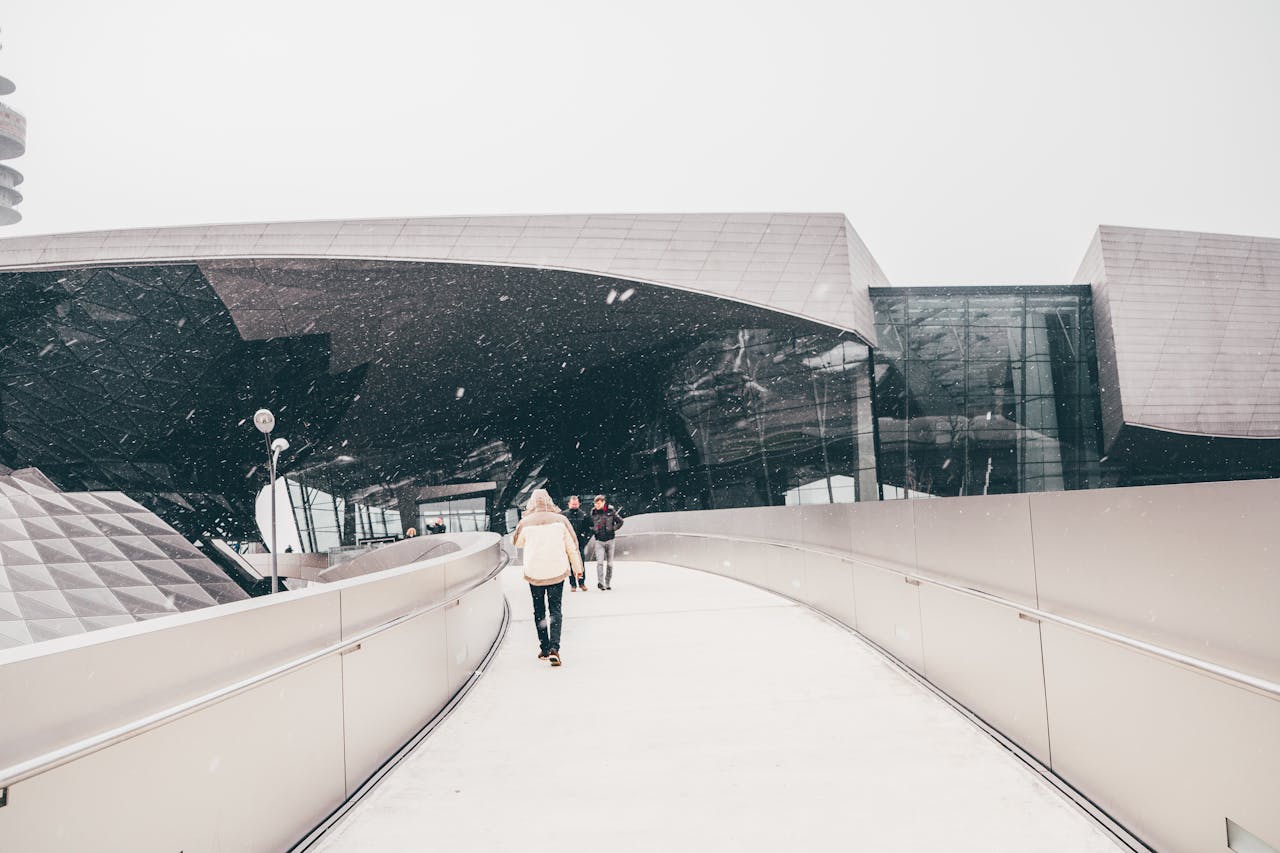
When planning a visit to Munich, travelers often contemplate whether three to four days provides sufficient time to experience the city’s world-renowned Oktoberfest celebrations, historic architecture, and impressive museums.
Munich distinguishes itself from other European destinations through its unique blend of Bavarian tradition, sophisticated urban culture, and proximity to the stunning Alps.
Visitors consistently rank Munich among the most worthwhile German cities to explore, particularly for its exceptional beer gardens, the picturesque Marienplatz central square, and the technological marvels at the Deutsches Museum.
How Many Days Do You Need in Munich for a Fulfilling Visit
Determining the ideal duration for a Munich visit requires careful consideration of both the city’s rich urban attractions and potential day trips to surrounding Bavarian treasures.
Travelers with just one day might focus exclusively on Munich’s historic center, while those with three to five days can experience a more thorough itinerary that includes excursions to Neuschwanstein Castle or Salzburg.
The best balance typically involves allocating at least two full days for Munich’s highlights—including Marienplatz, the Residenz, and English Garden—followed by selective day trips based on personal interests in art, history, or natural landscapes.
Itinerary Options for 1 to 5 Days
Planning a Munich itinerary requires careful consideration of how many days to allocate for a truly satisfying experience.
Visitors with just one day should prioritize the top 10 things to do in Munich Germany, focusing on the historic center.
Those with 3-5 days can explore things to see in Munich Germany more thoroughly, while adding day trips to things to do near Munich.
Balancing City Attractions With Day Trips
The art of balancing Munich’s urban treasures with enticing day trips requires strategic planning to maximize limited vacation time.
Lonely Planet Munich guides highlight efficient transportation options connecting the city’s safe districts with surrounding Bavarian wonders.
- Feel the alpine freedom at Neuschwanstein Castle
- Experience peaceful serenity at Lake Starnberg
- Discover sobering history at Dachau
- Embrace Bavarian charm in Salzburg
- Enjoy cultural immersion in Nuremberg
Is Munich Worth Visiting Compared to Other European Cities
Munich offers a distinctive mix of Bavarian culture, historical architecture, and outdoor activities that distinguishes it from Berlin’s edgy arts scene or Hamburg’s maritime heritage.
Travelers seeking traditional German experiences with walkable streets, beer gardens, and proximity to the Alps will find Munich particularly rewarding.
The city appeals especially to history enthusiasts, food lovers, and those who appreciate both urban sophistication and natural beauty within reach.
What Sets Munich Apart From Berlin or Hamburg
While Berlin stands as the political and cultural powerhouse and Hamburg boasts its maritime heritage, Munich distinguishes itself as Bavaria’s elegant capital with a character entirely its own.
- Alpine proximity offers breathtaking mountain getaways
- Authentic Bavarian culture preserved through traditions and festivals
- World-class beer gardens and breweries celebrating centuries-old brewing practices
- Renaissance and Baroque architecture creating storybook streetscapes
- Relaxed lifestyle balancing metropolitan sophistication with old-world charm
Ideal Traveler Profiles for Munich
Who should set their sights on Bavaria’s jewel?
Munich attracts art enthusiasts drawn to world-class museums, beer aficionados seeking authentic brewery experiences, and history buffs fascinated by Bavarian heritage sites.
Outdoor adventurers appreciate proximity to the Alps, while architecture lovers marvel at the mix of Gothic, Baroque, and modern structures.
Families benefit from safe streets and interactive attractions like the Deutsches Museum.
What Is Munich Known For Around the World
Munich stands as a global beacon of cultural heritage, renowned for its festive traditions like Oktoberfest, the world’s largest beer festival, and enchanting Christmas markets that transform the city into a winter wonderland.
The Bavarian capital showcases its rich history through architectural marvels such as the neo-Gothic New Town Hall, the twin-domed Frauenkirche, and the ornate Residenz palace complex.
Beyond celebrations and landmarks, Munich’s reputation extends to its artistic contributions, brewing excellence, technological innovation, and as home to prestigious institutions like BMW and FC Bayern München.
Celebrations Like Oktoberfest and Christmas Markets
When visitors think of celebration traditions in Bavaria, Oktoberfest and the Christmas markets immediately come to mind as Munich’s most internationally renowned festivities.
- Revel in six million attendees sharing massive beer halls during Oktoberfest
- Wander through illuminated Marienplatz as snowflakes dance above wooden stalls
- Savor freshly baked lebkuchen while Christmas carols echo through medieval squares
- Experience traditional folk dance performances in authentic Bavarian attire
- Toast with strangers as steins clink and friendship transcends language barriers
Historical and Cultural Highlights That Define the City
Beyond the festive traditions that draw visitors throughout the calendar year, what truly elevates Munich to global prominence is its intricate web of historical landmarks and cultural institutions that have shaped European identity for centuries.
From the Renaissance-era Residenz palace to the somber Nazi documentation center at Königsplatz, Munich offers a vibrant mosaic weaving together Bavarian heritage, artistic innovation, and pivotal moments in world history.
Safety, Costs, and Practical Tips

Munich consistently ranks among Europe’s safest cities, offering peace of mind for both solo travelers and tourist groups exploring its attractions day or night.
Budget-conscious visitors should prepare for Munich’s relatively high costs, particularly in accommodation and dining, though free attractions and affordable public transportation options can help mitigate expenses.
While German is the official language, English is widely spoken in tourist areas, though learning basic phrases like “Danke” (thank you), “Bitte” (please), and “Entschuldigung” (excuse me) enhances the cultural experience.
Is Munich Safe for Tourists and Solo Travelers
Munich offers numerous pedestrian-friendly neighborhoods, including the historic Altstadt and leafy Schwabing, where visitors can comfortably explore on foot without safety concerns.
In case of emergencies, tourists should note the European emergency number (112), the police direct line (110), and the locations of major hospitals such as the Klinikum Großhadern and Rechts der Isar.
Respecting local etiquette, including quieter voices in public spaces and adhering to recycling practices, helps travelers integrate seamlessly while enjoying Munich’s remarkable safety record as one of Europe’s most secure major cities.
Neighborhoods That Are Comfortable for Walking
When considering safe and comfortable areas for exploring on foot, travelers will find Munich offers numerous pedestrian-friendly neighborhoods that combine security with charm.
- Marienplatz and the historic Altstadt captivate with cobblestone streets and architectural marvels.
- Leafy Schwabing inspires with bohemian cafés and artistic energy.
- English Garden beckons with natural tranquility amid urban bustle.
- Haidhausen delights with village-like atmosphere and hidden courtyards.
- Glockenbachviertel energizes with trendy boutiques and lively nightlife.
Local Emergency Contacts and Etiquette
While exploring Munich’s walkable neighborhoods offers an enchanting experience, visitors should familiarize themselves with local emergency protocols and cultural etiquette to guarantee a smooth journey.
Germany’s emergency number is 112, while police can be reached at 110. Germans value punctuality and direct communication.
When dining, maintain moderate volume and always wait for “Prost” before drinking during toasts.
Is Munich Expensive for Budget-Conscious Visitors
Munich’s reputation as one of Germany’s pricier cities need not deter budget-conscious travelers who plan strategically for accommodations, meals, and transportation costs.
Visitors can greatly reduce expenses by opting for hostels or guesthouses instead of hotels, purchasing day passes for public transit, and eating at local markets rather than tourist-centered restaurants.
With careful planning, travelers can experience Munich’s rich cultural attractions while maintaining reasonable daily spending through free walking tours, museum discount days, and the economical Bavaria Ticket for regional exploration.
Costs of Accommodation, Food, and Transportation
Although Munich is renowned for its high quality of life, visitors often wonder if this Bavarian capital falls within their budget constraints.
Munich’s costs vary greatly by season and location, with accommodation representing the largest expense.
- Hotels average €100-200 per night in central areas
- Meals range from €5 street food to €25+ restaurant dinners
- Transport passes cost €7.90 daily or €19.60 weekly
- Beer gardens offer pints for €4-6
- Free walking tours and parks provide budget-friendly activities
Ways to Save While Still Enjoying the City
Even budget-conscious travelers can experience Munich’s splendor without breaking the bank through strategic planning and local insights.
The city offers numerous free walking tours, museum discount days, and affordable public transportation passes.
Locals recommend picnicking in English Garden rather than dining out daily, visiting biergartens where bringing outside food is permitted, and exploring neighborhoods beyond tourist zones.
What Languages Are Spoken and Common Phrases to Learn
The official language in Munich is German, though English is widely spoken in tourist areas, hotels, and restaurants, especially among younger locals.
Travelers can navigate the city comfortably with English, but learning basic German phrases demonstrates respect and enhances the cultural experience.
Essential expressions include “Grüß Gott” (hello), “Danke” (thank you), “Bitte” (please), and “Sprechen Sie Englisch?” (Do you speak English?), which can facilitate smoother interactions with locals who might not speak English.
German Phrases That Help With Basic Communication
While Munich is a cosmopolitan city where many locals speak English, learning basic German phrases greatly enhances the travel experience and shows respect for the local culture.
- “Grüß Gott” (greeting; literally “God greet you”) instantly marks you as Bavaria-savvy
- “Danke” (thank you) opens doors and hearts everywhere
- “Entschuldigung” (excuse me/sorry) helps navigate crowded beer halls
- “Die Rechnung, bitte” (the bill, please) essential for dining
- “Wo ist…?” (where is…?) liberates independent explorers
Where English Is Commonly Understood
Although basic German phrases prove useful, visitors can take comfort knowing English is widely spoken throughout Munich, particularly in tourist-centered locations.
Hotel staff, restaurant servers, museum attendants, and transportation employees typically possess solid English skills.
Major tourist attractions, business districts, and university areas offer the highest concentration of English speakers, making navigation manageable for international travelers without German fluency.
What to Do in Munich Germany Once You Arrive
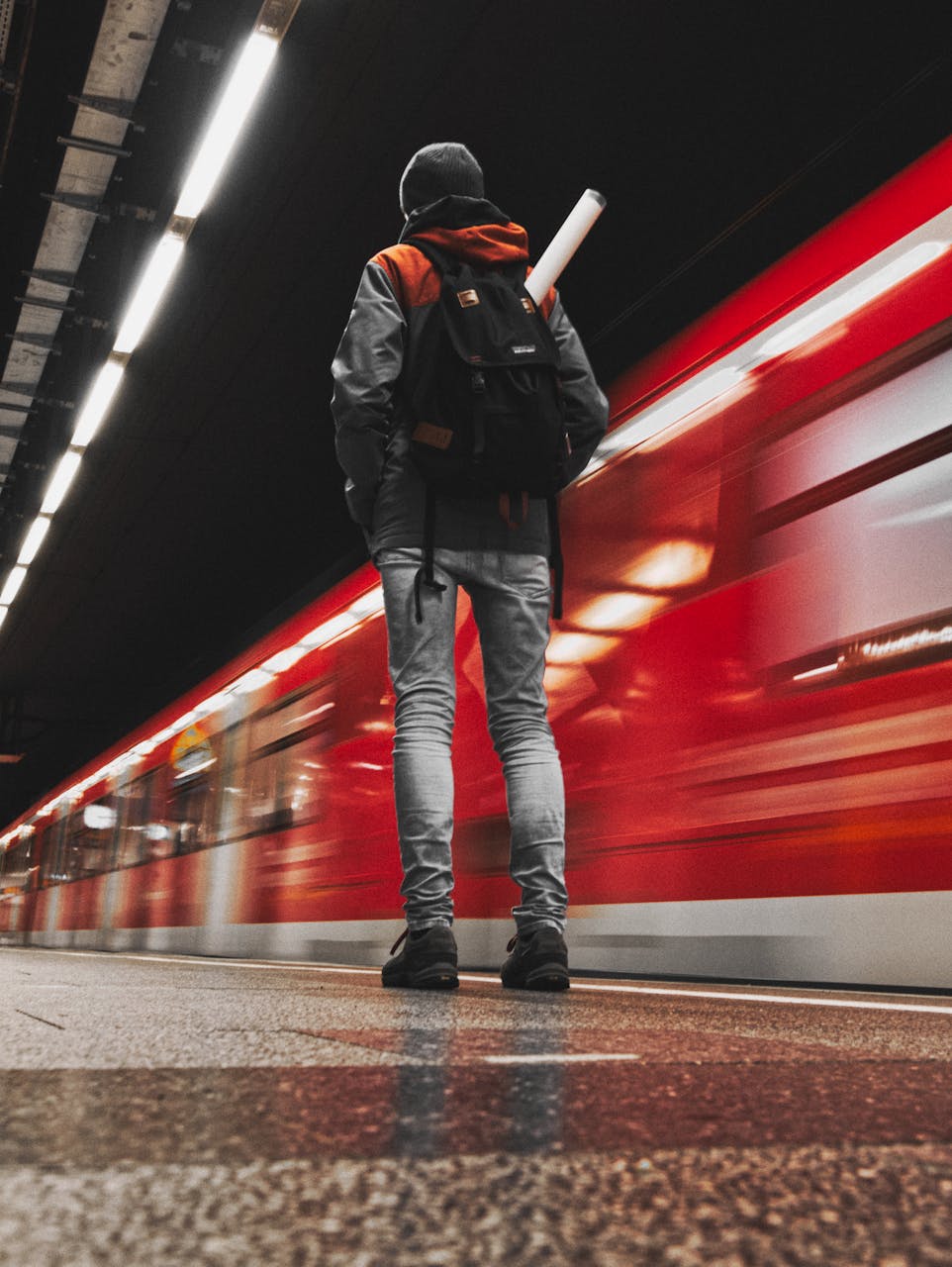
Munich offers a wealth of experiences for visitors, from must-see historical landmarks to hidden local haunts off the beaten path.
First-time travelers might feel overwhelmed by the city’s numerous attractions, making a focused approach to the most essential sights particularly valuable.
Beyond the typical tourist circuit, Munich reveals its authentic character through neighborhood cafés, local markets, and community gathering spots where travelers can experience the city as residents do.
Best Things to Do in Munich Germany for First-Time Visitors
Munich offers numerous attractions for first-time visitors enthusiastic to explore its rich history and lively culture.
Walking tours showcase the city’s architectural wonders while visits to historic sites like Marienplatz and Nymphenburg Palace provide glimpses into Bavaria’s royal past.
Beyond the bustling markets, travelers can find respite in expansive public parks, engage with world-class art in museums, or immerse themselves in authentic Bavarian traditions at cultural centers throughout the city.
Walking Tours, Market Visits, and Historic Sites
When first-time visitors arrive in the Bavarian capital, exploring on foot offers the most authentic introduction to centuries of history and culture.
- Stroll through Marienplatz to witness the famous Glockenspiel’s medieval dance.
- Wander the lively stalls of Viktualienmarkt, tasting local delicacies.
- Discover hidden WWII memorials tucked between ornate facades.
- Experience the grandeur of Residenz Palace’s 130 rooms.
- Follow cobblestone paths to ancient city gates and fortifications.
Public Parks, Museums, and Cultural Centers
Beyond the historic streets and markets, Munich offers sprawling green spaces, world-class museums, and lively cultural institutions that showcase both Bavarian traditions and contemporary arts.
The English Garden rivals New York’s Central Park in size, while the Museum Quarter houses treasures from ancient sculptures to modern masterpieces.
The Deutsches Museum stands as Europe’s largest science and technology museum, enchanting curious minds.
Top 10 Things to Do in Munich Without Overwhelm
Munich offers visitors a thoughtfully curated mix of outdoor retreats, cultural landmarks, and authentic local experiences that showcase the city’s distinctive charm without inducing travel fatigue.
The Bavarian capital reveals itself most gracefully through strategic exploration of locations where travelers can capture memorable photographs while enjoying peaceful moments away from tourist congestion.
These balanced experiences enable visitors to absorb Munich’s essence through both its iconic attractions and hidden corners, creating a travel narrative that feels both extensive and invigoratingly unrushed.
Balanced Mix of Outdoor, Cultural, and Local Experiences
Once travelers have settled into their accommodations, they face the delightful challenge of deciding what to experience in Bavaria’s lively capital.
Munich offers a harmonious blend of experiences:
- Surf the standing wave on the Eisbach in the English Garden
- Savor authentic Bavarian cuisine in century-old beer halls
- Climb St. Peter’s Church tower for panoramic city views
- Explore world-class museums in the Kunstareal district
- Join locals at seasonal festivals beyond just Oktoberfest
Locations Ideal for Photography and Relaxation
For photographers and relaxation-seekers, Bavaria’s capital reveals itself through a collection of picturesque locations that balance natural beauty with architectural splendor.
The English Garden offers serene meadows and the unique sight of urban surfers riding the Eisbach wave.
Meanwhile, Olympiaberg provides panoramic city views, Nymphenburg Palace showcases reflective waters, and Viktualienmarkt captures Munich’s lively daily life amid colorful stalls and historical buildings.
Non Touristy Things to Do in Munich for a Local Feel
Munich offers authentic experiences beyond the typical tourist attractions, with local neighborhoods like Westend, Glockenbach, and Haidhausen featuring charming cafés where Münchners gather daily.
Visitors seeking cultural immersion can explore smaller museums such as the Potato Museum, Valentin-Karlstadt Musäum, or the Beer and Oktoberfest Museum, which showcase unique aspects of Bavarian heritage without the crowds.
Community events including neighborhood festivals, local farmers’ markets, and seasonal celebrations provide genuine opportunities to experience Munich as residents do, rather than as tourists.
Alternative Neighborhoods and Hidden Cafés
While tourists flock to Marienplatz and the English Garden, savvy travelers discover that Munich’s true character lives in its lesser-known quarters.
- Schwabing’s artist-filled backstreets house intimate jazz clubs and bohemian bookshops.
- Au-Haidhausen’s hidden courtyards reveal family-run cafés serving homemade Bavarian pastries.
- Glockenbach’s lively LGBTQ+ scene thrives alongside third-wave coffee culture.
- Westend’s multicultural eateries offer authentic global cuisine at local prices.
- Untergiesing’s riverside paths lead to garden cafés untouched by tourism.
Lesser-Known Museums and Community Events
Beyond the grand halls of the Deutsches Museum and Pinakothek galleries lies a treasure trove of lesser-known cultural institutions where locals gather to celebrate Munich’s diverse heritage.
The Munich Stadtmuseum hosts lively community events, while the Villa Stuck offers intimate art exhibitions.
Locals frequent the Valentin-Karlstadt-Musäum for its quirky humor and the Monacensia literary archive for cultural discourse.
Where to Go and What to See
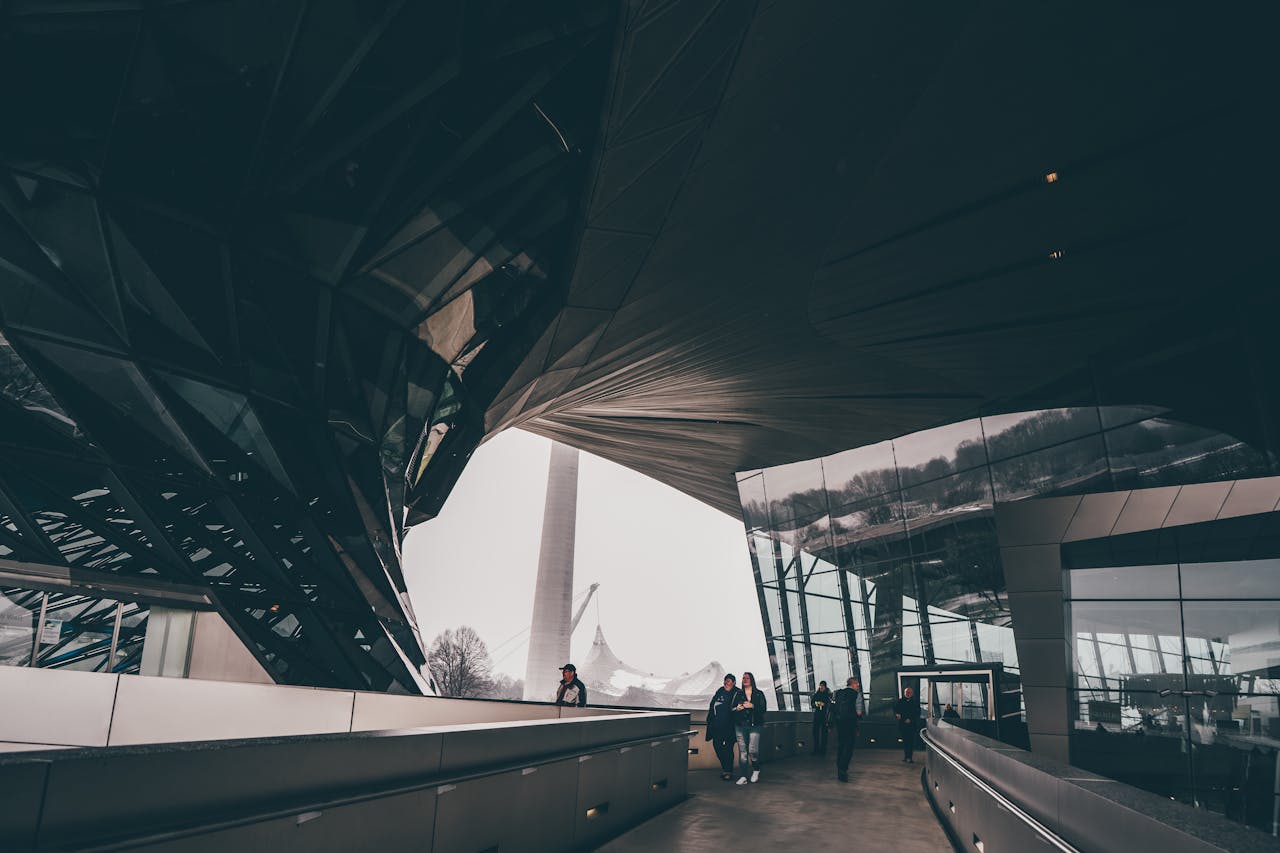
Munich’s character emerges through its distinct landmarks, from the bustling Marienplatz with its iconic Glockenspiel to the peaceful English Garden where locals surf urban waves.
History buffs can explore architectural marvels like the Neo-Gothic Neues Rathaus, the twin-domed Frauenkirche Cathedral, and the ornate Residenz palace complex that spans seven centuries of Bavarian royal history.
Budget-conscious travelers will appreciate Munich’s wealth of free attractions, including wandering the atmospheric Viktualienmarkt food market, admiring street performers along Kaufingerstrasse, and contemplating the Feldherrnhalle’s imposing stone lions on Odeonsplatz.
Munich Places to Visit That Reflect the City’s Personality
Munich’s lively personality reveals itself in iconic spots like Marienplatz, where the Glockenspiel chimes attract visitors throughout the day, and the sprawling Englischer Garten, which offers both serene nature walks and bustling beer gardens.
Visitors can experience the city’s blend of tradition and modernity by morning sightseeing at historic landmarks and evening explorations of local breweries or cultural performances.
The city transforms from a hub of architectural marvels and museum treasures during daylight hours to a lively center of Bavarian nightlife as darkness falls.
Iconic Spots Like Marienplatz and Englischer Garten
The heart of Bavaria reveals itself most vividly in Munich’s iconic public spaces, where centuries of history blend with the everyday rhythms of city life.
- Marienplatz’s Gothic splendor unfolds beneath the Glockenspiel’s dancing figures.
- Englischer Garten offers wilderness larger than Central Park.
- Nymphenburg Palace whispers royal secrets across manicured grounds.
- Viktualienmarkt entices with regional delicacies amid ancient traditions.
- BMW Welt showcases German engineering excellence with futuristic flair.
Day and Night Activity Recommendations
While the sun illuminates Bavaria’s capital with golden light, visitors can experience the city’s dual personality through carefully chosen activities that showcase both Munich’s historical reverence and its contemporary energy.
Daytime offers BMW Museum tours, Viktualienmarkt browsing, and Nymphenburg Palace exploration.
After sunset, immerse in Schwabing’s lively nightlife, attend world-class concerts at Gasteig, or savor authentic beer culture at traditional breweries beyond Oktoberfest’s seasonal bustle.
Places to Visit in Munich for History and Architecture
Munich’s architectural splendor unfolds through its magnificent churches, opulent palaces, and imposing government buildings that bear witness to Bavaria’s rich historical legacy.
Visitors can explore Gothic masterpieces like the Frauenkirche with its distinctive twin onion domes, the ornate Residenz palace complex that housed Bavarian monarchs, or the Neo-Gothic Neues Rathaus dominating Marienplatz with its famous Glockenspiel.
Dedicated walking routes connect these architectural gems, allowing travelers to appreciate the evolution of Munich’s aesthetic from medieval religious structures to Renaissance royal residences and Baroque civic monuments.
Churches, Palaces, and Historic Government Buildings
Steeped in centuries of Bavarian history, Munich’s architectural landscape showcases an impressive array of churches, palaces, and historic government buildings that reflect its royal heritage and Catholic traditions.
- Nymphenburg Palace’s baroque grandeur offers glimpses into royal Bavarian life.
- St. Peter’s Church provides breathtaking city views for those willing to climb.
- Munich Residenz contains hidden treasures spanning Renaissance to neoclassical styles.
- Theatine Church’s yellow facade beckons with Italian-inspired opulence.
- Neues Rathaus dominates Marienplatz with its gothic revival freedom.
Walking Routes for Architectural Highlights
Steering through Munich’s architectural wonders becomes most rewarding when following carefully curated walking routes that connect the city’s historic landmarks.
The “Royal Route” links Odeonsplatz to Königsplatz, passing neoclassical masterpieces, while the “Medieval Path” traverses from Isartor through narrow streets to Marienplatz.
For Modernism enthusiasts, the “Schwabing Circuit” showcases Jugendstil facades and bohemian architectural innovations.
Things to See in Munich Germany Without Paid Entry
Munich offers numerous cost-free experiences through its abundance of free attractions and public art installations scattered throughout the city.
Travelers can wander through open-air markets like Viktualienmarkt, where local culture thrives amid fresh produce and Bavarian specialties without spending a euro.
The city’s seasonal festivals, including portions of Oktoberfest grounds and Christmas markets, present opportunities to absorb Munich’s lively atmosphere and traditions while maintaining budget-conscious travel.
Free Attractions and Public Art Installations
While exploring Munich on a budget, travelers can discover an abundance of free attractions and public art installations that showcase the city’s cultural richness without spending a euro.
- Wander through the sprawling English Garden, where nude sunbathers embody Bavarian freedom.
- Marvel at the Glockenspiel show in Marienplatz, a centuries-old clockwork dance of history.
- Discover hidden street art in the bohemian Schwabing district.
- Contemplate the somber White Rose memorial at Ludwig Maximilian University.
- Experience the lively urban pulse at Eisbachwelle, watching surfers ride the artificial wave.
Open-Air Markets and Seasonal Festivals
Lively marketplaces and festive celebrations infuse Munich’s calendar with colorful, cost-free experiences where travelers can immerse themselves in authentic Bavarian culture year-round.
From the historic Viktualienmarkt‘s fresh produce stalls to the enchanting Christkindlmarkt during December, these gatherings showcase local craftsmanship, regional cuisine, and traditional music.
Springtime brings Frühlingsfest, while autumn heralds the world-famous Oktoberfest‘s spectacular parades and festivities.
Day Trips and Local Exploration
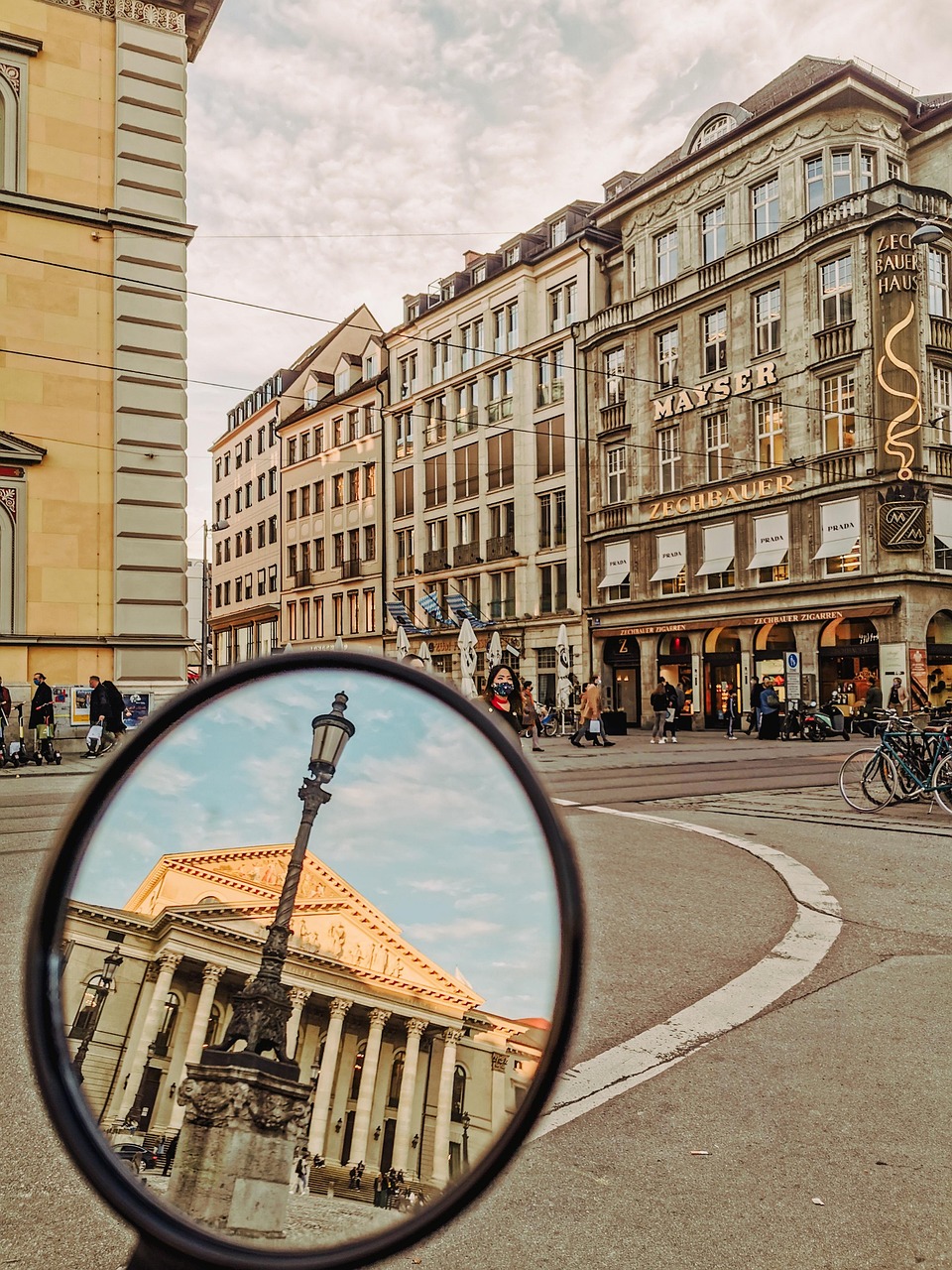
Munich’s proximity to breathtaking destinations makes it an ideal base for travelers seeking day trips to Neuschwanstein Castle, Salzburg, or the pristine Bavarian Alps.
Visitors can enhance their explorations with specialized guidebooks that highlight lesser-known gems like Dachau, Lake Starnberg, and medieval Regensburg—all accessible via efficient public transportation.
The Munich Tourism Office offers customized itineraries and seasonal excursion packages, ensuring travelers maximize their Bavarian adventures beyond city limits.
Things to Do Near Munich That Are Worth the Time
Munich’s enviable location in Bavaria makes it an ideal base for exploring several world-famous destinations within easy reach.
Day-trippers can visit the fairy-tale Neuschwanstein Castle, tour the sobering Dachau Concentration Camp Memorial Site, or cross into Austria to experience Mozart’s birthplace in Salzburg.
The Bavarian regional train network and organized tour buses offer convenient transportation options for these excursions, with most attractions accessible within a 1-2 hour journey from Munich’s central station.
Destinations Like Neuschwanstein, Dachau, and Salzburg
While Munich itself offers countless attractions, the surrounding Bavarian countryside and neighboring regions beckon travelers with remarkable day trip opportunities.
- Neuschwanstein Castle’s fairy-tale spires rising above misty forests
- Dachau’s somber corridors preserving essential historical lessons
- Salzburg’s baroque splendor and Mozart’s lingering melodies
- Alpine villages nestled between towering mountain vistas
- Crystal-clear lakes reflecting Bavaria’s untamed natural beauty
Best Transportation Options for Day Trips
Travelers’ choices on how to venture beyond Munich’s city limits can greatly impact their overall experience when exploring Bavaria’s treasures.
The efficient Bayern Ticket offers unlimited regional train travel for a day at €26, ideal for reaching Neuschwanstein or Salzburg.
Car rentals provide flexibility for countryside exploration, while guided tours eliminate navigation concerns, particularly valuable for Dachau’s historical complexities.
Munich Guides for Travelers Who Want to Explore Nearby
Munich offers extensive train routes that connect travelers to quaint Bavarian villages, alpine retreats, and neighboring countries with Deutsche Bahn providing reliable service every 20-30 minutes to popular destinations.
Curated itineraries from sources like Wikitravel suggest practical day trips such as the 40-minute journey to Dachau’s historic sites, the 90-minute ride to Salzburg’s Mozart heritage, or the efficient 2-hour connection to Nuremberg’s medieval center.
Local insiders recommend purchasing the Bayern Ticket for unlimited regional travel, arriving at stations 15 minutes before departure, and avoiding peak travel times on Friday afternoons when Munich residents head to weekend mountain retreats.
Train Routes and Itinerary Ideas
Beyond the city limits, Bavaria offers travelers based in Munich an abundance of memorable day trips accessible through the region’s efficient rail network.
The Bavarian railway system connects visitors to stunning destinations within easy reach:
- Alpine panoramas in Garmisch-Partenkirchen (1.5 hours)
- Fairytale Neuschwanstein Castle near Füssen (2 hours)
- Medieval charm of Regensburg (1.5 hours)
- Nuremberg’s historical significance (1 hour)
- Pristine waters of Lake Starnberg (30 minutes)
Local Tips From Munich Wikitravel and Other Sources
While train routes offer structured pathways through Bavaria, seasoned travelers often seek insider knowledge to uncover hidden gems beyond the typical tourist circuit.
Wikitravel recommends day trips to Starnberger See and Andechs Monastery for authentic Bavarian experiences.
Local guides suggest exploring the lesser-known neighborhoods of Haidhausen and Schwabing, where visitors can experience Munich’s lively cultural scene away from tourist crowds.
Visiting with Help From Munich Tourism Services
Munich’s tourism services offer extensive resources for visitors, including detailed city maps and information available at the central Tourist Office in Marienplatz and satellite locations throughout the city.
The Munich Card and City Pass provide excellent value with free public transportation and discounted entry to major attractions, while guided tours range from historical walking excursions to specialized themes like beer history or architectural highlights.
Travelers can also access digital planning tools through the official Visit Munich website and mobile app, which feature customizable itineraries, real-time event calendars, and transportation updates.
Where to Find Tourist Information and Maps
When visiting an unfamiliar city, finding reliable information is essential for maximizing the travel experience.
Munich offers several convenient locations to obtain maps and guidance:
- The main tourist office at Marienplatz provides extensive city maps and personalized advice.
- München Hauptbahnhof information center offers transportation maps and regional excursion details.
- Digital Munich apps deliver real-time navigation and crowd-avoiding tips.
- Hotel concierge services feature insider recommendations.
- Free neighborhood maps at U-Bahn stations highlight local attractions.
City Passes, Tours, and Online Resources
Several cost-effective options exist for tourists wanting to explore Munich thoroughly while saving money.
The Munich City Pass and Bavaria Ticket offer discounted access to attractions and public transportation.
Free walking tours depart daily from Marienplatz, while specialized beer and history tours provide deeper cultural insights.
Websites like muenchen.de and Munich Travel Guide offer extensive itineraries, event calendars, and practical travel tips.
Cultural Etiquette and Seasonal Notes
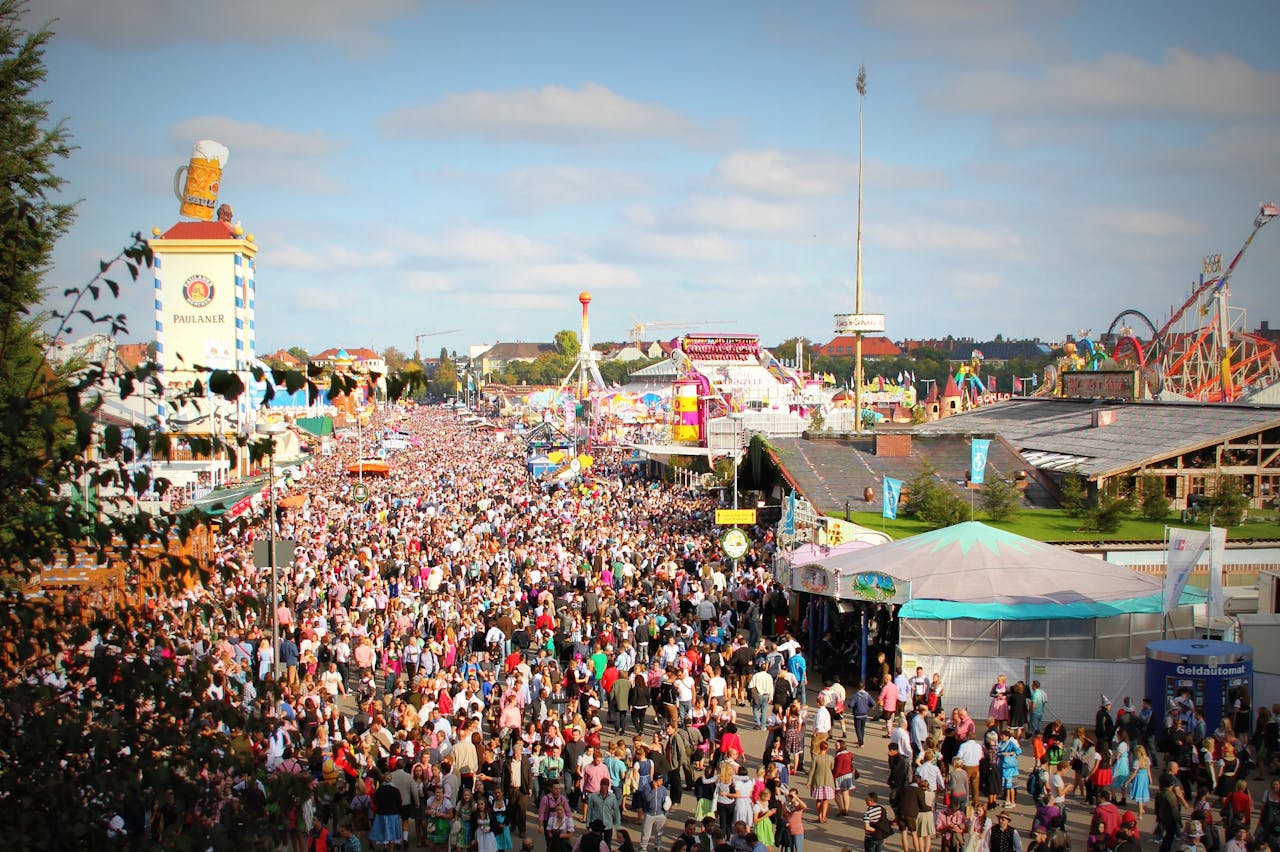
Visitors to Munich should familiarize themselves with the city’s social customs, including punctuality expectations, formal greetings, and the respectful “Prost” toast during Biergarten visits.
Winter travelers will encounter the enchanting Christkindlmarkt throughout December, where mulled wine (Glühwein) and traditional crafts transform the city’s squares into festive wonderlands.
Munich’s seasonal activities shift dramatically with the weather—from summer’s English Garden sunbathing and surfing on the Eisbach wave to winter’s nearby Alpine skiing and indoor museum explorations during snowfall.
Public Behavior and Social Norms in Munich
In Munich, social etiquette emphasizes formal greetings, with locals typically exchanging a firm handshake and maintaining eye contact while addressing others with appropriate honorifics.
Dining customs involve keeping hands visible on the table, waiting for the host to begin eating, and following the continental style of holding utensils throughout the meal.
Tipping practices differ from North American standards, with service charges often included in bills, though rounding up or adding 5-10% for exceptional service remains customary in restaurants, taxis, and hotels.
Greeting Customs and Public Conduct Expectations
Understanding Munich’s greeting customs and public conduct expectations proves essential for travelers wishing to navigate the city’s social landscape with ease.
- “Grüß Gott” greeting opens authentic local connections
- Handshakes delivered with confident eye contact earn immediate respect
- Public transit silence reflects valued communal consideration
- Punctuality demonstrates character, not merely courtesy
- Recycling participation signals your environmental consciousness
Dining and Tipping Practices
Munich’s dining etiquette reflects the city’s blend of traditional Bavarian values and cosmopolitan sensibilities that travelers must navigate to enjoy authentic culinary experiences.
Tipping is straightforward—typically rounding up or adding 5-10% for good service.
When finished eating, place utensils parallel on the plate.
Unlike American customs, Germans consider it polite to keep hands visible on the table during meals.
Things to Know About Visiting Munich in December
Winter visitors to Munich should prepare for the city’s magical December transformation, when Marienplatz and surrounding squares host dazzling Christkindlmärkte filled with handcrafted gifts, glühwein, and regional specialties.
Temperatures typically range from -4°C to 4°C (25°F to 39°F), necessitating warm layers, waterproof boots, and thermal accessories for comfortable exploration of both outdoor festivities and indoor cultural venues.
Munich’s December calendar brims with special concerts, theater performances, and religious ceremonies that require advance booking, particularly during the peak holiday weeks between Advent and Epiphany.
Holiday Markets, Winter Temperatures, and Event Schedules
December in Munich transforms the Bavarian capital into a winter wonderland where centuries-old traditions blend with seasonal festivities.
Visitors should prepare for:
- Christkindlmarkt at Marienplatz dazzles with handcrafted ornaments and mulled wine
- Temperatures hovering between -3°C to 4°C require proper layering
- Museums and concert halls adjust hours for holiday observances
- English-speaking guided tours become less frequent
- Public transit runs on reduced holiday schedules
What to Pack for a Winter Visit
Packing appropriately for Bavaria’s capital during its coldest season guarantees visitors can fully enjoy the festive atmosphere while respecting local customs.
Essential items include thermal layers, waterproof boots, a heavyweight coat, and versatile accessories like scarves and gloves.
Munich locals dress smartly even in winter, so visitors should include at least one refined outfit for upscale restaurants or the opera.
Seasonal Activities Based on Munich Weather
Munich’s seasons each offer distinct experiences, from summer beer gardens and festivals to winter Christmas markets and skiing opportunities in nearby Alps.
Visitors should consider planning around major events like Oktoberfest in autumn, when moderate temperatures enhance outdoor enjoyment, or the lively spring when parks bloom spectacularly despite occasional rainfall.
Understanding Munich’s weather patterns allows travelers to pack appropriately and maximize their experience, whether enjoying summer’s warmth along the Isar River or embracing winter’s cultural events when temperatures typically fall below freezing.
What to Do in Munich Germany During Each Season
When planning activities in Munich, visitors should consider the city’s distinct seasonal transformations that shape both its atmosphere and available experiences.
- Spring blossoms transform English Garden paths into enchanting strolls beneath awakening trees.
- Summer beer gardens buzz with locals sharing communal tables under chestnut canopies.
- Autumn’s Oktoberfest fills the air with music, laughter and traditional Bavarian celebrations.
- Winter markets illuminate medieval squares with twinkling lights and mulled wine aromas.
- Technical Museum provides year-round wonder regardless of weather conditions.
Planning Around Festivals, Rainfall, and Outdoor Comfort
Beyond the seasonal attractions, successful Munich visits hinge on thoughtful planning around the city’s cultural calendar and climate patterns.
Oktoberfest (late September) draws massive crowds, requiring advance bookings.
May through September offers pleasant outdoor temperatures but occasional rainfall—pack layers and portable umbrellas.
Winter festivals like Christkindlmarkt provide enchanting experiences despite cold temperatures, while spring’s Frühlingsfest celebrates Bavaria with fewer tourists.
Wrapping Up
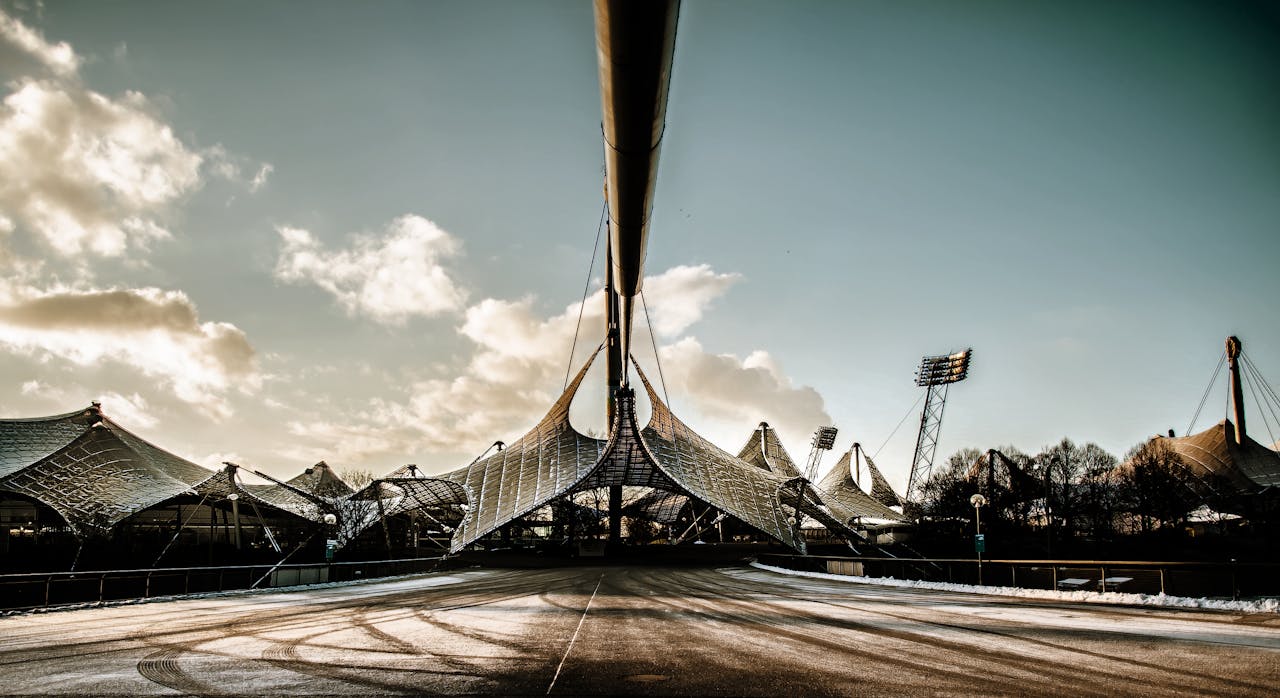
Munich captivates travelers with its harmonious blend of tradition and modernity.
Contrary to the oft-repeated theory that the city offers merely beer gardens and Oktoberfest revelry, Munich reveals itself as a multifaceted gem of cultural depth and natural beauty.
Armed with practical knowledge and cultural sensitivity, visitors discover that Munich’s true charm lies in its livable elegance—a city that rewards both meticulous planners and spontaneous wanderers alike.
Frequently Asked Questions (FAQs)
How many days should I spend in Munich to see the main attractions?
Most travelers find that 3 to 4 days is ideal to explore Munich’s top attractions such as Marienplatz, English Garden, Nymphenburg Palace, and the Deutsches Museum. This timeframe also allows for a short day trip to nearby sites like Neuschwanstein Castle or Salzburg.
Is Munich safe for solo travelers and tourists?
Yes, Munich is considered one of the safest cities in Europe. Its neighborhoods—like Altstadt, Schwabing, and Haidhausen—are pedestrian-friendly and secure. Emergency numbers are 112 (general emergencies) and 110 (police).
Is English widely spoken in Munich, and should I learn any German?
English is commonly spoken in tourist areas, hotels, restaurants, and museums. However, learning basic German phrases like “Danke” (Thank you), “Bitte” (Please), and “Entschuldigung” (Excuse me) is appreciated and enhances local interactions.

